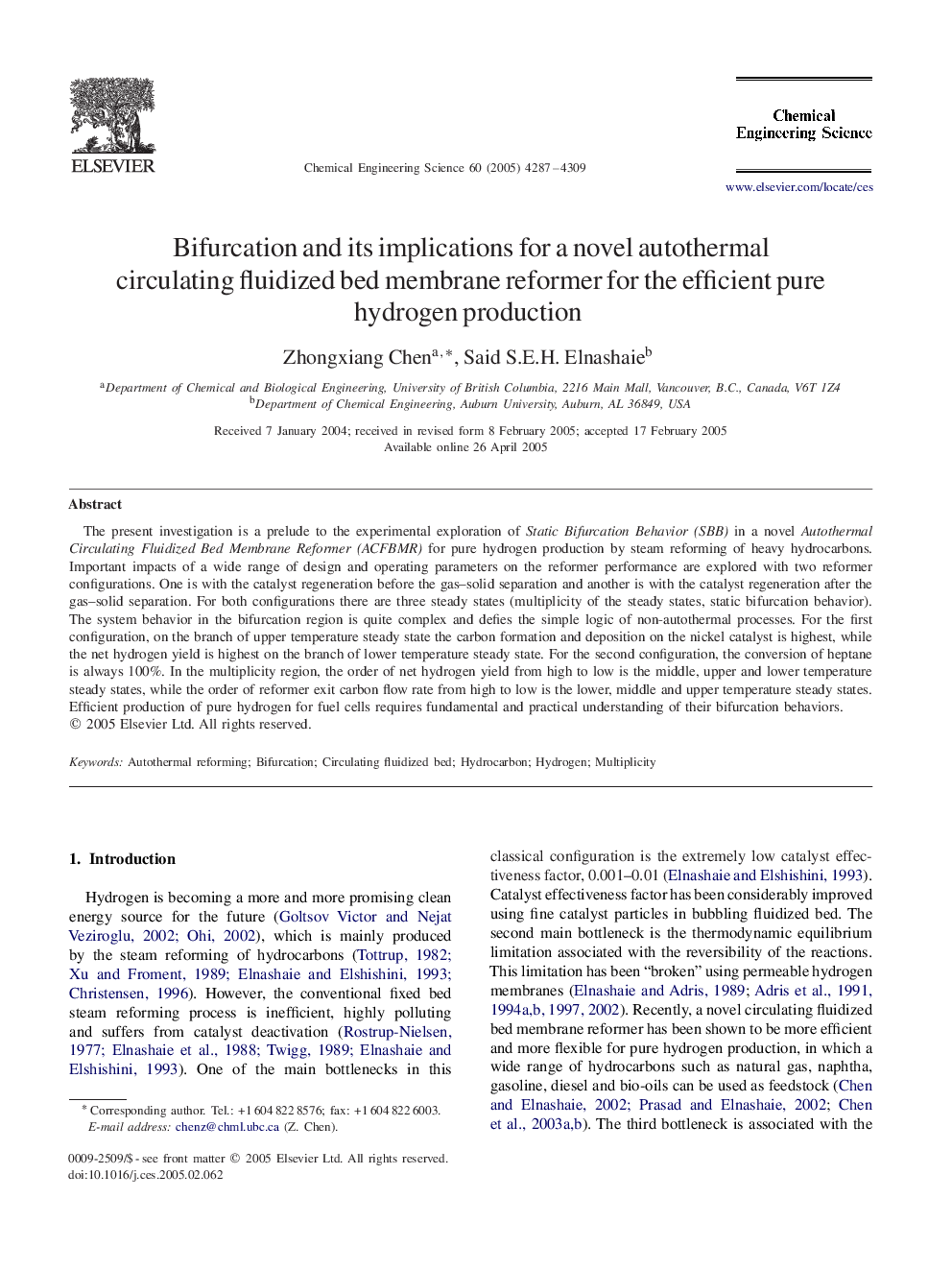| Article ID | Journal | Published Year | Pages | File Type |
|---|---|---|---|---|
| 161305 | Chemical Engineering Science | 2005 | 23 Pages |
The present investigation is a prelude to the experimental exploration of Static Bifurcation Behavior (SBB) in a novel Autothermal Circulating Fluidized Bed Membrane Reformer (ACFBMR) for pure hydrogen production by steam reforming of heavy hydrocarbons. Important impacts of a wide range of design and operating parameters on the reformer performance are explored with two reformer configurations. One is with the catalyst regeneration before the gas–solid separation and another is with the catalyst regeneration after the gas–solid separation. For both configurations there are three steady states (multiplicity of the steady states, static bifurcation behavior). The system behavior in the bifurcation region is quite complex and defies the simple logic of non-autothermal processes. For the first configuration, on the branch of upper temperature steady state the carbon formation and deposition on the nickel catalyst is highest, while the net hydrogen yield is highest on the branch of lower temperature steady state. For the second configuration, the conversion of heptane is always 100%. In the multiplicity region, the order of net hydrogen yield from high to low is the middle, upper and lower temperature steady states, while the order of reformer exit carbon flow rate from high to low is the lower, middle and upper temperature steady states. Efficient production of pure hydrogen for fuel cells requires fundamental and practical understanding of their bifurcation behaviors.
